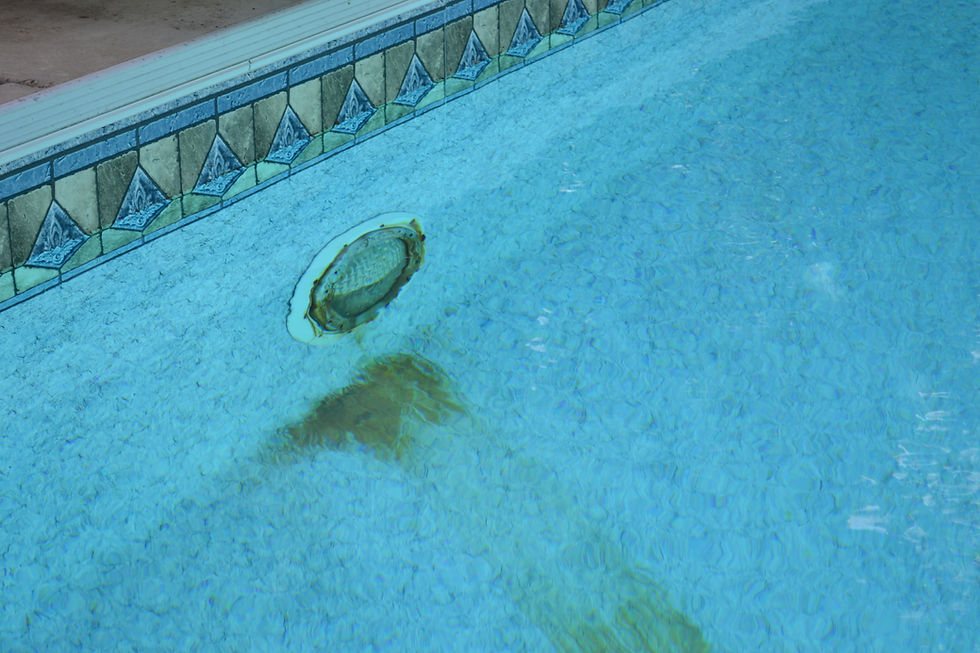A Clear Pool is Not Always a Safe Pool
- Angie's Pool & Spa, Inc.

- Mar 20, 2022
- 2 min read
Everyone dreams of a sparkling, clear pool, right? While a clear pool can be a sign of great maintenance and healthy water, it can also be a sign of acidic water that is not safe for swimming. It is important that pH and alkalinity are in balance when it comes to your pool water!

What is the difference between pH and alkalinity?
pH is the abbreviation for “potential hydrogen” and the reading indicates the concentration of hydrogen ions in the water. Basically, it is the measure of how acidic or basic (alkaline) the water is. Total alkalinity is the measure of how stable the pH is. It measures the water’s buffering capacity to resist pH changes. Without control of the total alkalinity, the pH will rise and fall abruptly.

What are healthy pH and alkalinity readings?
An ideal pH reading is between 7.4 and 7.6. An ideal alkalinity reading is between 80 and 120 ppm. Maintaining these levels is important for keeping your pool properly sanitized and non-corrosive. When your pH and alkalinity levels are too low, your pool water becomes acidic. This can cause eye and ear irritation to swimmers, as well as corrode your pool surface and equipment.

What do I do if my pH and alkalinity readings aren't healthy?
There are two options for treating acidic water. The first is to treat chemically with pH Up and Alkalinity Up. Treating chemically is a great option when your readings are just below where we want them to be. The other option is to drain some water and treat with fresh water. Fresh water is naturally high in pH and alkalinity. When you dilute your pool water with fresh water, these readings will rise. Fresh water is the best and most cost effective option for pool water with extremely low pH and alkalinity or water with a high total dissolved solids (TDS) reading.

How do I prevent low pH and Alkalinity readings?
We recommend getting your pool water professionally tested at least once a week. At Angie's, we offer free water testing and can tell you every chemical you need to treat your water down to the ounce. When you get your water tested often, it helps you maintain and balance your chemical levels more easily! Another recommendation is not to rely too heavily on chlorine tablets. Tablets should be used to help maintain your chlorine level - do not rely on them for a chlorine reading! Chlorine tablets can cause your pH and alkalinity to plummet with overuse. Instead, you should be used liquid or powdered shock once a week (1 gallon or 1 pound for every 10,000 gallons of pool water).





Thank you for this eye-opening post it's a powerful reminder that pool safety goes way beyond the surface. Your breakdown of how acidic water can hide behind that inviting clarity really hits home, especially when it comes to protecting our loved ones. It makes me think of *Remembering Brennan Mosley: A Life of Love, Legacy, and Light*, a story that honors a young life cut short by an unseen danger in the water. Brennan's legacy shines as a beacon for all of us to prioritize not just clear pools, but truly safe ones through regular testing and balanced chemistry. Let's keep sharing these tips to prevent heartache and ensure every splash is a safe one. Grateful for resources like Angie's…
I really appreciated your post “A Clear Pool Is Not Always a Safe Pool” the insights on visual clarity versus chemical balance and hidden hazards are eye-opening. I recently sat for an online exam in water quality and pool safety, and while managing the labs I looked into Best Online Lab Help to ease the load so I could focus more on theory. Your article is a great reminder that appearance doesn’t always tell the full safety story.
Interesting reminder that clarity doesn’t always equal safety, analysis matters. When I needed help refining my technical chapters, I consulted Engineering dissertation writers via an affordable assignment pathway. Their input clarified hidden assumptions and strengthened my structural logic so the final output wasn’t just clean-looking but sound too.
This blog really highlights a critical point just because a pool looks clean doesn’t mean it’s safe. It reminded me how often we overlook the deeper layers in many areas, even in content creation. I was once struggling to maintain content clarity until I connected with freelance blog writers for hire who understood the hidden layers beneath polished writing much like checking what’s really in the water.
Kaiser OTC benefits provide members with discounts on over-the-counter medications, vitamins, and health essentials, promoting better health management and cost-effective wellness solutions.
Obituaries near me help you find recent death notices, providing information about funeral services, memorials, and tributes for loved ones in your area.
is traveluro legit? Many users have had mixed experiences with the platform, so it's important to read reviews and verify deals before booking.